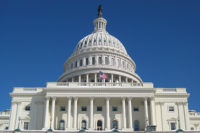Last year, the HVACR industry saw an unprecedented amount of regulatory action from government entities, and, according to industry leaders, the regulatory action will continue through 2015. On the residential side, specifically, regulatory items like the regional standards enforcement rule and R-22 allocation changes will affect the supply chain from top to bottom.
What to Expect in 2015
Jon Melchi, vice president of government affairs and business development, Heating, Air-conditioning, and Refrigeration Distributors International (HARDI), predicts cuts to the supply of hydrochlorofluorocarbon (HCFC)-22 in the U.S. and the recent implementation of regional energy conservation standards for air conditioners will be the two biggest issues affecting the residential HVACR market in 2015.
“Fortunately, we have withstood the greatest onslaught of regulatory action on the residential side,” Melchi said. “We see what was completed in 2014 as having the biggest impact in 2015 — not that there aren’t going to be things coming up, but they’re not as significant as regional standards and R-22 allocation. We’re going to see finalization of the rulemaking on regional energy-efficiency standards. It puts new requirements on all distributors and some contractors as well as the labeling changes for manufacturers. On the residential side, those have to be the biggest changes we’re going to see this year.”
Karim Amrane, senior vice president of regulatory and international policy for Air-Conditioning, Heating, and Refrigeration Institute (AHRI), said, as far as rulemakings affecting the HVACR industry go, the U.S. Department of Energy (DOE) has 14 rulemakings in various stages of development. “Those are efficiency standard rulemakings,” he clarified. “On top of that, we have additional rulemakings on test procedures ongoing, as well.”
“The EPA may take a closer look at dry-ship data for R-22, but it’s likely not going to do anything within the year,” Melchi said. “There are some challenges out there.”
Energy-efficiency advocates at the Alliance to Save Energy acknowledge regulation and standards are impacting other industries, as well.
“The DOE is working on 30-some different appliance and equipment standards beyond HVAC,” said Rodney Sobin, director of research, regulatory affairs, the Alliance to Save Energy. “With respect to residential HVAC, there’s some stuff going on, particularly regarding residential furnaces.”
Regional Standards Enforcement
Despite the implementation of new regional energy conservation standards for air conditioners on Jan. 1, an enforcement rule is not yet complete, which has left many contractors and distributors in limbo.
“We’re obviously waiting for the enforcement rule on residential HVAC equipment for regional standards,” said Charlie McCrudden, senior vice president of government relations, ACCA. “[The Regional Standards Enforcement Working Group] finished its negotiated rulemaking back in October and submitted its term sheet to the ASRAC [Appliance Standards and Rulemaking Federal Advisory Committee], which was approved and forwarded to the DOE. They’re now in the process of putting that into regulatory language for posting in the Federal Register.”
Amrane predicts a final rule governing enforcement won’t be issued until this spring — likely three to four months after the standards went into effect.
“We are expecting a proposed rule soon — this month or next,” he said. “That’s going to be subject to a short comment period of maybe 30-45 days, then finalized after that. So, we shouldn’t expect a final rule until maybe sometime in March or April.”
McCrudden added it’s possible the rule may come out even later. “We haven’t seen it posted in the Federal Register yet, so that expected deadline may slip a little,” he said.
Melchi said distributors are in wait-and-see mode.
“Everybody is kind of waiting for the enforcement of regional standards to be finalized,” he said.
“We’re telling our people now to prepare for what was approved by the ASRAC, but it’s not go-time until the government says so. There are a lot of people waiting on them. But, distributors are already starting to have to collect information they haven’t always collected, and I think that’s going to be a major process change for many distributors. Contractors may also notice a longer wait time with distributors, as they have to collect that information.”
New Furnace Standards Coming
Closely related to the new air conditioner standards is the ongoing rulemaking for residential nonweatherized gas furnace energy conservation standards, which were the subject of a highly publicized lawsuit that ended in a joint settlement agreement between DOE, the American Public Gas Association (APGA), and others in March 2014. As part of the agreement, the furnace standards were vacated and remanded for a fresh rulemaking.
“The DOE is going to put out a proposed rule soon, and they’ll take comments on it,” McCrudden said. “That was one of the contingencies — one of the elements of the settlement agreement of the lawsuit — that the DOE put out a new proposal within a year and a new final rule within two years. That final rule would then have an effective, or compliance, date of five years later.”
“We’re certainly sure APGA, manufacturers, and contractors will be paying strong attention to this,” Sobin said. “The residential furnace effort is quite important. We are, as are many in the energy-efficiency community, interested in there being somewhat more stringent efficiency requirements moving toward condensing furnaces, but we are also aware there are concerns, particularly in the retrofit and replacement area. There can be some constraints and expenses, and I know that’s of concern to the gas industry and manufacturers. So, this is an area where there will be a need for additional discussion as to technical and economically feasible options.”
So far, the DOE has completed the notice of proposed rulemaking (NOPR), which was submitted to the Office of Management and Budget (OMB) for review, Amrane said.
“The schedule, according to the DOE, indicates it is expecting a decision by the end of 2015, but that could always change,” he said. “It depends on how long the rule stays at OMB. If the proposed rule is released this month, it’s possible the DOE could complete it by the end of the year.”
Amrane said AHRI plans to comment on the NOPR when it is published. “We have some concerns with some of the assumptions the DOE has made in the analysis,” he said. “With what we’ve seen so far, there are a few things we will be vigilant about. We will submit our comments when we see the full proposed rule.”
R-22 Phaseout Continues
The other big issue many industry leaders agree will affect the residential market is the phaseout of ozone-depleting R-22. The U.S. Environmental Protection Agency (EPA) finalized its phaseout plan late last year, which calls for a drastic cut in R-22 production and importation this year and a linear phaseout between now and 2020.
While the EPA allowed 51 million pounds in 2014, it slashed that amount to 22 million pounds in 2015. Eighteen million pounds of new and imported R-22 will be allowed in 2016, 13 million pounds in 2017, 9 million pounds in 2018, and 4 million pounds in 2019. After that, new or imported R-22 will be banned in the U.S.
“We estimate 75-80 percent of the equipment we service still operates on R-22,” said Butch Welsch, owner, Welsch Heating and Cooling, St. Louis. “This has definitely affected us. Now, if a piece of equipment has any type of significant refrigerant leak, we recommend the entire system be replaced. Awareness of the phasedown has caused a large number of homeowners to have their equipment replaced with R-410A equipment, so they’ll have the most up-to-date refrigerant in their equipment.”
The EPA is also currently looking to restrict the use of certain hydrofluorocarbon (HFC) refrigerants in some new and retrofit retail food applications under its Significant New Alternatives Policy (SNAP) Program. Additionally, it recently expanded the list of acceptable substitutes for ozone-depleting substances to include some refrigerants used in HVAC, foam-blowing, fire-suppression, and explosion-protection applications.
“The EPA looked to make an exception with some refrigerants, which are mostly hydrocarbon [HC] refrigerants, because venting would not have a harmful effect on the environment,” McCrudden said. “ACCA filed comments saying that, ‘If it doesn’t harm the environment, it doesn’t make sense to include it in the prohibition of venting. But, while they may not harm the environment, they do pose unique hazards in transportation, use, and handling.’”
No Rest for the Weary
In addition to working on energy conservation standards for residential nonweatherized natural gas furnaces, the DOE has already begun working on the next round of energy conservation standards for residential air conditioners and heat pumps, even though the most recent regional standards were implemented just a month ago and still lack a formal enforcement policy.
“It’s going to take maybe two years for the DOE to publish a NOPR, but we are going to be looking at this rule very carefully,” Amrane said.
“In particular, we have concerns the DOE is starting a rulemaking without understanding the current standard, its potential impact on shipments, and so on. We don’t understand why the process is being done like this. The DOE has to publish those rules within the timeframe dictated by the Energy Policy and Conservation Act [EPCA], but, it’s very difficult to assess the impact of a standard that just became effective. We don’t know the impact — and won’t know the impact — of the standard for a few years down the road.”
Sobin said the Alliance to Save Energy hopes not to see a delay in the promulgation and implementation of any efficiency standards affecting the industry. “We would certainly like to see the standards move forward, and we know that the DOE, in previous years, has fallen behind on a variety of appliance and equipment standards — not just those impacting the HVAC industry,” he said. “It’s been making very good progress over the past year or so, but a number of cases have been experiencing delays because the DOE has fallen behind on the proposed ruling.”
With a tidal wave of regulations washing over the industry in 2015, many industry organizations are extending resources to the supply chain to help keep them up to date on the standards and issues affecting the industry in 2015. HVACR industry organizations like ACCA, AHRI, HARDI, the Alliance to Save Energy, and others keep their members updated with newsletters, presentations, videos, online content, and in-person training. Additionally, anyone can access OMB’s Unified Agenda of Regulatory and Deregulatory Actions (http://bit.ly/UnifiedAgenda) in order to view and track ongoing regulatory actions.
“We’re ramping up our reporting on the rules that are coming out,” McCrudden said. “We’re going to see controversial rules that have been sitting around for a long time — rules that are going to be unpopular — make an appearance. Congressional gridlock means Congress doesn’t do much, but it also means the White House can’t get its agenda through its regular order of process, so regulatory agencies are going to be releasing rules over the next two years at a much greater pace.”
Publication date: 2/9/2015
Want more HVAC industry news and information? Join The NEWS on Facebook, Twitter, and LinkedIn today!








